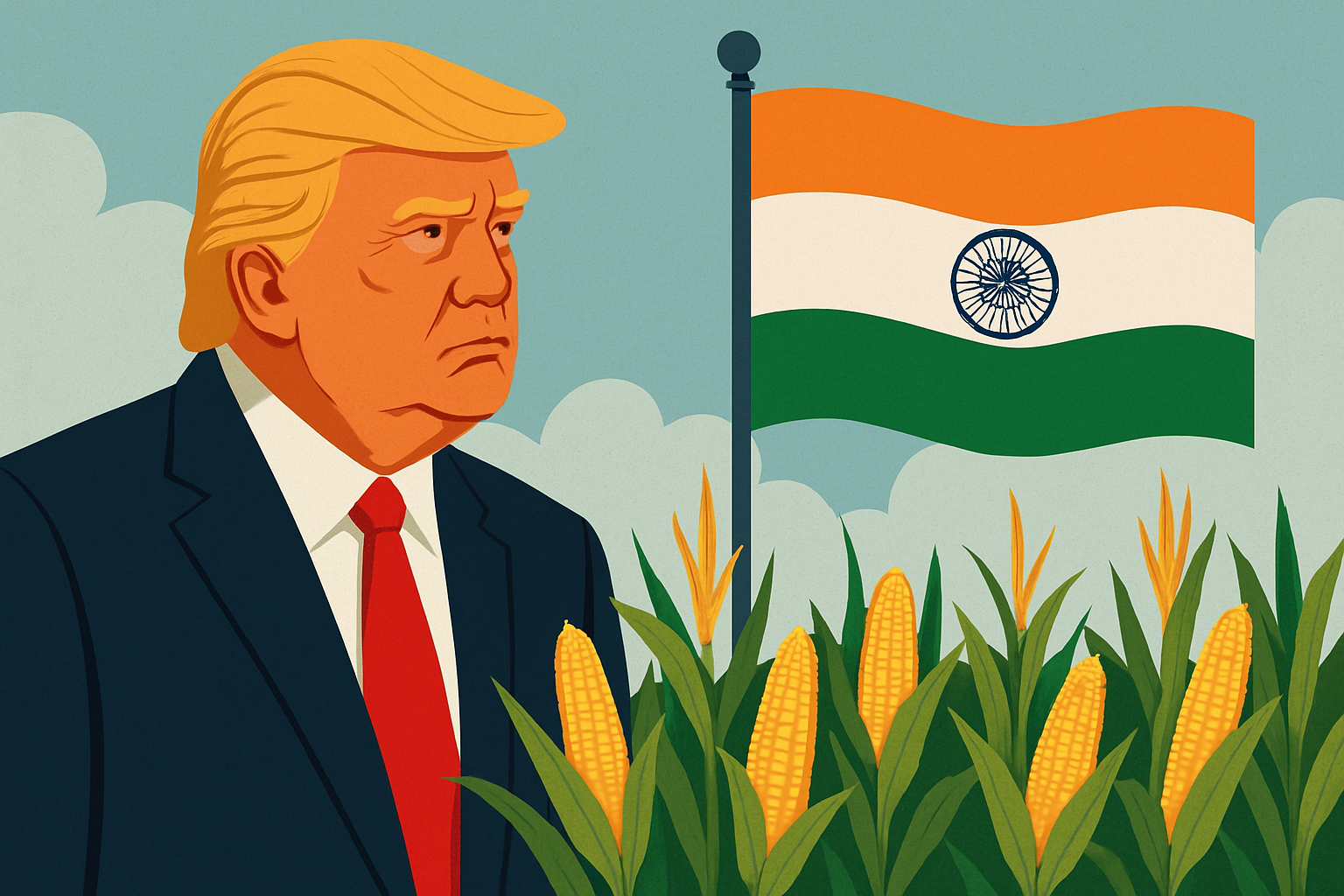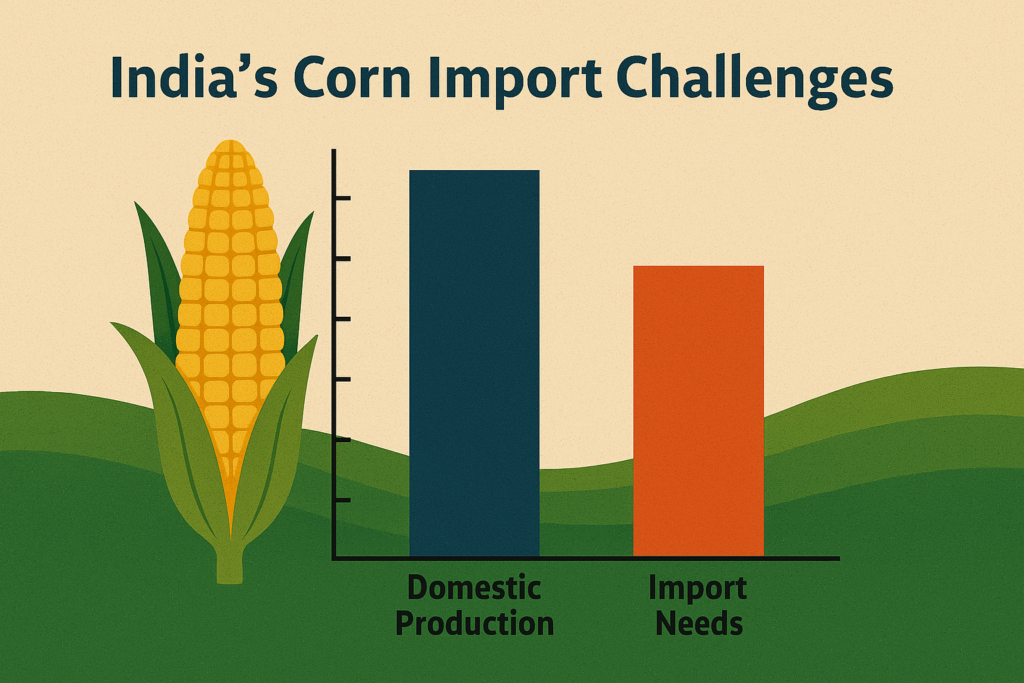Latest News
India’s Agricultural Priorities vs Trump’s US Corn Deal | Why India May Say No

India’s Agricultural as part of yet another attempt to improve commercial ties between the two nations, former President Donald Trump recently called on India to buy maize from the US. Notwithstanding the offer’s possible allure, India could be hesitant to purchase significant amounts of US maize for a variety of political, economic, and agricultural reasons. India is unlikely to accept this plan given the complexity of its agricultural environment, local production objectives, and current trade agreements. This blog examines the reasons why India could eventually turn down Trump’s offer since its agricultural interests might not coincide with his.
1. India’s Agricultural Corn Production Self-Sufficiency
India produces more than 25 million metric tonnes of maize a year, making it one of the world’s top producers. India has a rather strong local maize producing industry, in contrast to many other nations that rely on imports to satisfy their food and feed needs. In areas like Karnataka, Bihar, and Madhya Pradesh, maize is grown extensively and is used in both the food and animal feed industries.

The need of importing maize from the US or any other nation becomes less urgent given India’s significant local output. India usually imports maize in modest amounts to fill some demand shortages, mostly for animal feed and industrial purposes. Although Trump’s offer is attractive from a trade standpoint, it may not immediately solve any requirements in the Indian maize market.
2. Priorities in Politics and Economics
India’s economy depends heavily on agriculture, which employs a sizable section of the workforce, particularly in rural regions. Policies that prioritise self-sufficiency in important crops, such as maize, rice, and wheat, have been continuously pursued by India. For a crop like maize, depending on outside sources might be viewed as detrimental to India’s long-term agricultural strategy.
Supporting Indian farmers and maintaining the competitiveness of the nation’s agricultural economy are also top priorities for the Indian government. It might be argued that buying a lot of maize from the US would hurt local farmers, especially since many of them already struggle to get fair prices for their crops because of market forces like climate change and fluctuating input costs.
One could argue that Trump’s plan jeopardises India’s own agricultural interests. Such a deal would probably have controversial political repercussions, particularly if it is thought to favour foreign suppliers over domestic manufacturing. Instead of using funds to import maize from overseas at the expense of domestic farmers, the Indian government is more likely to concentrate on projects that safeguard its agricultural industry.
3. Current Agreements and Trade Relations

India already has established trade agreements with other nations that meet its agricultural needs, even though the United States and India have made great progress in enhancing their bilateral trade relations. India, for instance, imports maize from nations that have proven to be dependable suppliers, such as Argentina and Brazil. A sudden shift to US corn is unlikely to upset these trade relationships, which are founded on years of mutual trust and advantageous trade terms.
Furthermore, India prioritises nations with which it has close geopolitical and economic ties in its trade policies. The US, while an important trading partner, faces stiff competition from other countries that can offer competitive pricing and terms. The expense and logistical difficulties of shipping maize from the United States to India may potentially reduce its appeal in comparison to other suppliers.
4. Conditions of the Local Market and Consumption Trends
India’s maize market is influenced by local consumption patterns, primarily in the food and animal feed industries. Corn is utilised for different reasons, from culinary goods like cornflakes and snacks to cattle feed. However, the need for maize in India is generally supplied by local production, with just a tiny amount being imported.
The US corn market, on the other hand, is mostly export-driven, and much of the maize produced is destined for industrial uses, such as ethanol manufacturing and animal feed. The kind and quality of maize produced in the US may not always satisfy the demands of Indian consumers and enterprises. India may opt to acquire maize that is better suited to local food tastes or feed needs, which might further limit the chances of large-scale imports from the US.
5. Environmental & Sustainability Concerns
India has increasingly concentrated on sustainable agricultural methods, notably with relation to water conservation, organic farming, and lowering dependency on chemical fertilizers and pesticides. The farming procedures utilised in the US may not correspond with India’s ecological aspirations. For example, US maize production generally entails the use of genetically modified organisms (GMOs) and significant pesticide application, which might create concerns among Indian consumers and lawmakers who are apprehensive about genetically modified crops.
India has indicated a preference for obtaining food and agricultural goods that fulfil particular environmental and health requirements. As the global demand for sustainably derived food items develops, India is expected to be increasingly choosy about the nations it works with for agricultural imports, prioritising those that fit with its own sustainability initiatives. The environmental effect of US maize production and the possible hazards linked with GMOs might make Indian politicians leery of completely adopting such imports.
6. Conclusion
India is unlikely to accept Trump’s suggestion to purchase US maize in a meaningful manner, even if it may be presented as a trade opportunity. India prefers self-sufficiency and local sourcing, as shown by its domestic maize production, political interests, current trade agreements, and local market circumstances. Any possible advantages for India may be outweighed by the logistical difficulties, environmental issues, and financial considerations associated with importing US maize. India is thus more likely to keep depending on its own maize production and to keep up its trading with nations who share its agricultural and economic objectives.
A mix of political factors, trade realities, and agricultural interests that favour local output and existing relationships make Trump’s desire for India to purchase US maize unlikely to succeed. The agricultural industry in India is strong enough to support its own demands, and policies that encourage sustainable methods and local farmers will probably continue to be given top priority.












